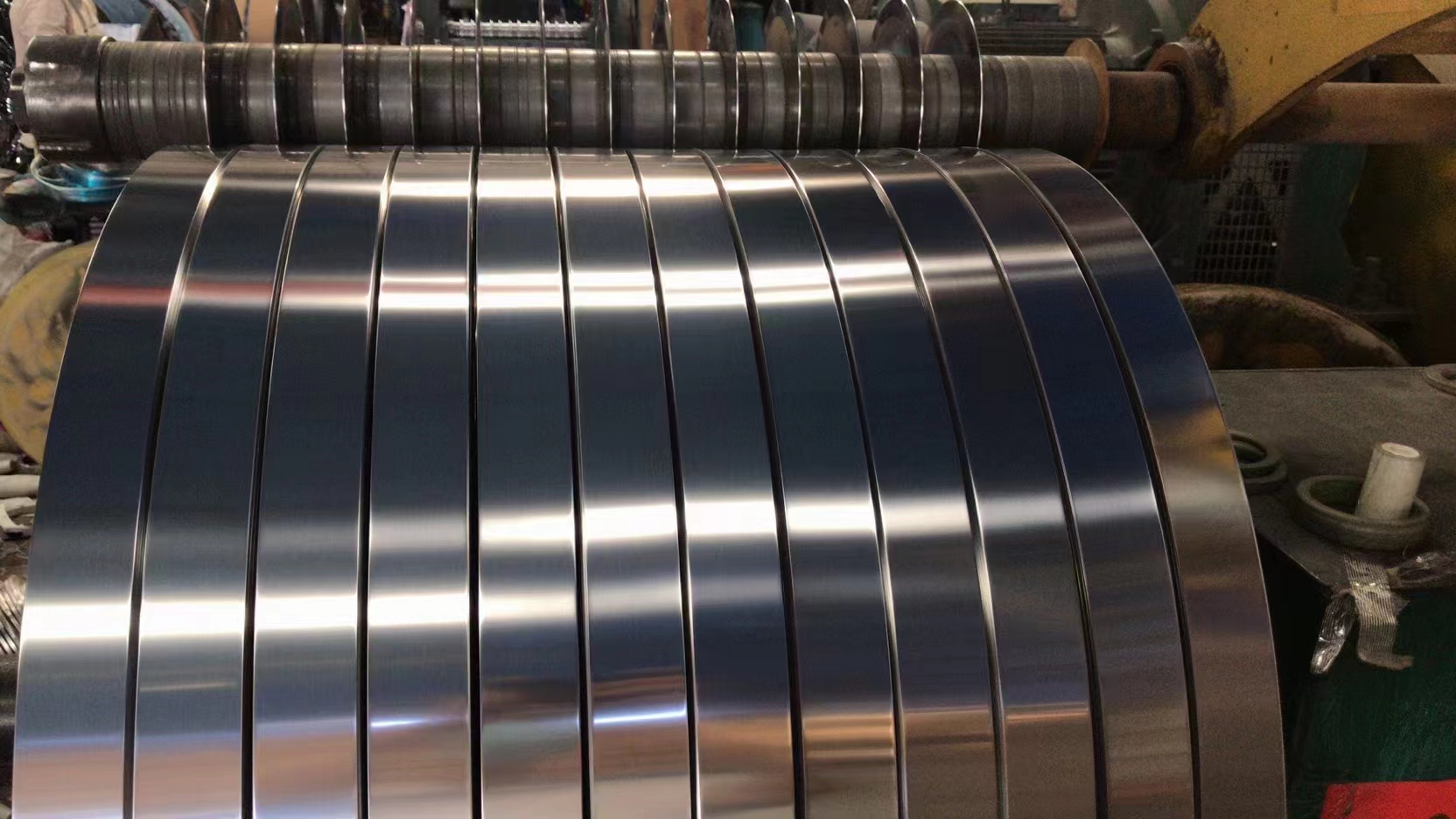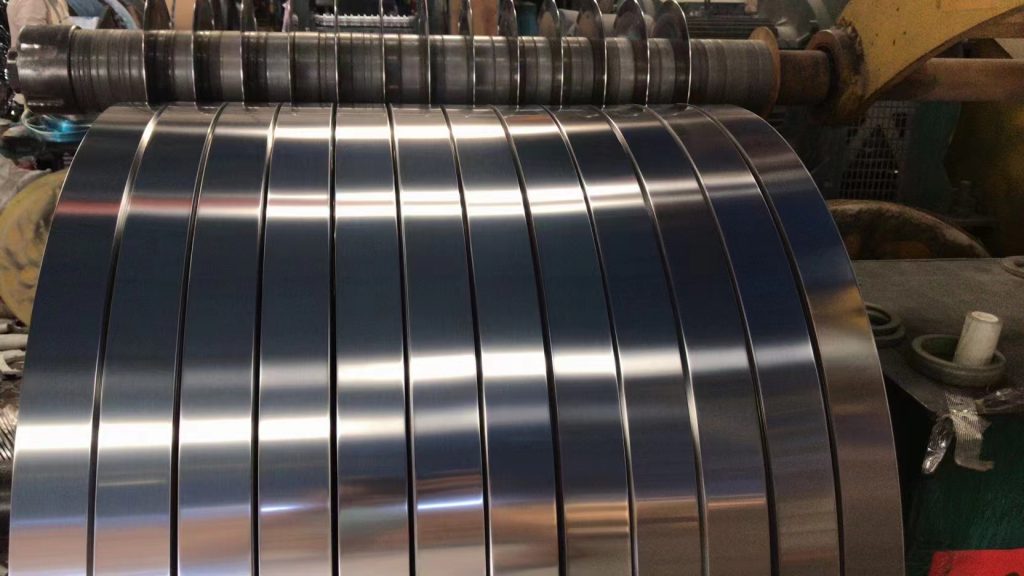
The manufacturing process of stainless steel strip is significantly different from that of ordinary cold-rolled strip steel. That is, the stainless steel strip must undergo an annealing process before cold rolling, and the surface of the strip must be kept clean at all times during production, so as to increase the yield and corrosion resistance of the stainless steel strip.

The production process of stainless steel strip is basically hot-rolled strip (blank), annealing, pickling, grinding, cold rolling, annealing, pickling, flattening, polishing, shearing, inspection and classification to packaging and storage.
The annealing time of ferritic stainless steel and martensitic stainless steel is relatively long, the purpose is to facilitate recrystallization and dissolution of carbides.
Generally, annealing is carried out in a bell furnace, the annealing temperature is about 800℃, and the temperature is kept for 2 to 6 hours.
Ferritic stainless steel should be cooled quickly in the air to avoid embrittlement.
Martensitic stainless steel must not be cooled quickly to prevent excessive internal stress and hardening cracks.
The heating temperature of austenitic stainless steel in a continuous furnace is 1000 to 1100℃, and it must be cooled quickly in water or air.
After annealing, the stainless steel strip is first shot blasted, and after breaking the surface oxide scale, it is brushed and then enters the pickling tank to completely remove the oxide scale and surface passivation.
Nitric acid or sulfuric acid is usually used for pickling. The temperature of the nitric acid solution is 20 to 55°C, and the temperature of the sulfuric acid solution is 50-70°C.
Annealing and pickling of stainless steel strips are usually carried out in annealing and pickling units.
After pickling, the stainless steel strip is inspected, surface defects are repaired on a belt grinder, and then sent to the cold rolling mill for rolling.
Stainless steel is a difficult-to-deform steel, which is easy to cause work hardening during cold rolling, especially when rolling with multiple passes and low compression rates.
Stainless steel strips are usually rolled on four-roll mills and multi-roll mills, such as partial eight-roll mills and twenty-roll mills.
For austenitic stainless steel, which is relatively easy to roll, the compression rate per pass cannot be greater than 25%, and the total compression rate per rolling process cannot be higher than 75%.
For martensitic stainless steel with relatively high carbon content, the compression rate per pass is 15% and the total compression rate per rolling process is not more than 50%.
When a rolling process is completed, the cold rolling work hardening should be removed by intermediate annealing and pickling.
For austenitic stainless steel, the heating temperature reaches 10501080℃, and for ferritic and martensitic stainless steel, the heating temperature is about 800℃.
After heating, quench in water, air or steam.
The iron scale formed during the heat treatment process is oxidized and loosened in the salt bath furnace, which is convenient for pickling.
After pickling, the surface of the stainless steel strip should be inspected and defects should be removed on the grinding machine.
Bright annealing of the finished stainless steel strip is the last re-annealing in a non-oxidizing atmosphere.
Decomposed ammonia is generally used as a protective gas.
After bright annealing, grinding and polishing are usually not performed to ensure the surface roughness of the obtained stainless steel strip.
The purpose of leveling is to optimize the surface quality of the stainless steel strip and also optimize the plate shape of the stainless steel strip.
The compression rate during leveling is usually not higher than 2%. In order to obtain a very smooth stainless steel strip surface, the rollers need to be polished frequently during the leveling process.
In order to enhance the corrosion resistance of the stainless steel strip, some special types of stainless steel strips must also be ground and polished.
Wet grinding is usually used to avoid burn marks or cracks caused by the poor thermal conductivity of stainless steel.